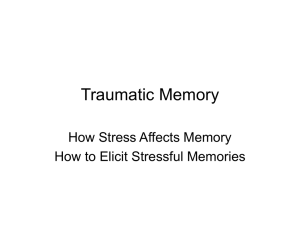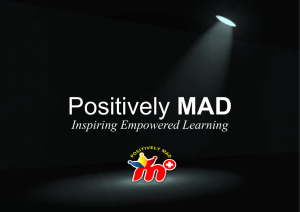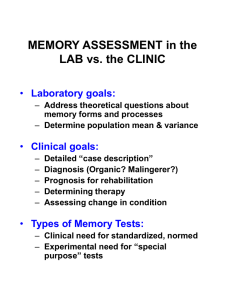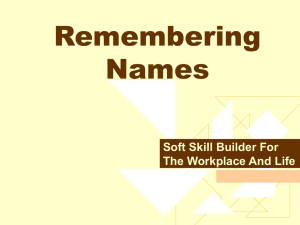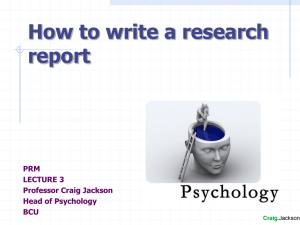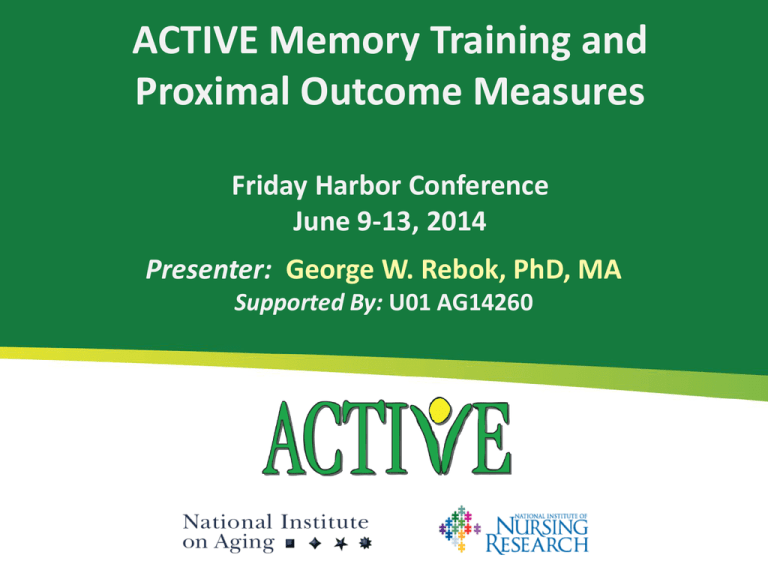
ACTIVE Memory Training and
Proximal Outcome Measures
Friday Harbor Conference
June 9-13, 2014
Presenter: George W. Rebok, PhD, MA
Supported By: U01 AG14260
ACTIVE Steering Committee
University of AlabamaBirmingham
University of Florida/Wayne State
University
Karlene Ball, PhD
Michael Marsiske, PhD
Hebrew SeniorLife Boston
New England Research Institutes,
Coordinating Center
John Morris, PhD
Richard Jones, ScD
Indiana University
Fredrick Unverzagt, PhD
Johns Hopkins University
Sharon Tennstedt, PhD
National Institute on Aging
Jonathan King, PhD
George Rebok, PhD
National Institute of Nursing
Research
Pennsylvania State University
Susan Marden, PhD
Sherry Willis, PhD
Disclosure
Dr. Rebok is an Investigator with Compact Disc
Incorporated for the development of an electronic
version of the ACTIVE memory intervention.
Acknowledgements
• Funded in part by Grant R13 AG030995 from the
National Institute on Aging
• The views expressed in written conference
materials or publications and by speakers and
moderators do not necessarily reflect the official
policies of the Department of Health and Human
Services; nor does mention by trade names,
commercial practices, or organizations imply
endorsement by the U.S. Government.
Friday Harbor Psychometrics, 2014
Overview
1. Background
2. Memory
training
3. Results
4. Conclusion
Previous studies of memory
training with older adults
Description of the ACTIVE
memory training protocol
Overview of the results of
the ACTIVE memory training
Implications for further
analysis of the ACTIVE
memory training data
0
5
10
15
Histogram of 402 scientific studies of memory training
1970
1980
1990
Year
2000
2010
Study Selection
Study-Specific Effect Sizes
Overall pre-post
effect size (95% CI)
Andrewes, 1996
Ball, 2002
Becker, 2008
Best, 1992
Buschkuel, 2008
Calero, 2007a
Calero, 2007b
Calero-Garcia, 2007a
Calero-Garcia, 2007b
Caprio-Prevette, 1996
Carretti, 2007
Craik, 2007
Dahlin, 2008
Derwinger, 2005a
Derwinger, 2005b
Dunlosky, 2003
Fabre, 2002
Flynn, 1990
Hill, 1990
Hill, 1991a
Hill, 1991b
Hill, 1997
Lustig, 2008
McDougall, 2008
Mohs, 1998
Rapp, 2002
Scogin, 1985
Scogin, 1992
Scogin, 1998
Smith, 2009
Stigsdotter, 1989
Woolverton, 2001a
Woolverton, 2001b
Yesavage, 1983
Yesavage, 1984
Overall (I-squared = 12.4%, p = 0.261)
-2
0.08 (-0.54, 0.70)
0.26 (0.16, 0.36)
0.14 (-0.28, 0.55)
1.55 (0.53, 2.57)
0.49 (-0.19, 1.16)
0.41 (0.02, 0.80)
0.54 (-0.00, 1.07)
0.52 (-0.03, 1.08)
0.53 (-0.09, 1.16)
0.43 (0.06, 0.80)
0.55 (-0.19, 1.30)
0.31 (-0.26, 0.87)
0.74 (0.03, 1.46)
0.00 (-0.62, 0.62)
0.24 (-0.38, 0.86)
0.39 (-0.10, 0.88)
0.51 (-0.48, 1.51)
0.52 (-0.11, 1.16)
1.78 (0.90, 2.66)
0.51 (-0.10, 1.11)
0.08 (-0.49, 0.65)
0.31 (-0.35, 0.96)
-0.14 (-0.83, 0.56)
0.08 (-0.16, 0.32)
0.06 (-0.27, 0.39)
0.08 (-0.82, 0.98)
0.26 (-0.32, 0.84)
0.15 (-0.44, 0.74)
0.29 (-0.31, 0.89)
0.20 (0.03, 0.38)
0.46 (-0.43, 1.35)
0.41 (-0.15, 0.97)
0.85 (0.26, 1.44)
0.38 (-0.18, 0.94)
0.64 (-0.01, 1.28)
0.31 (0.22, 0.39)
-1
0
1
2
Standardized difference in pre-post change
between memory and control groups
Overview
1. Background
2. Memory
training
3. Results
4. Conclusion
Previous studies of memory
training with older adults
Description of the ACTIVE
memory training protocol
Overview of the results of
the ACTIVE memory training
Implications for further
analysis of the ACTIVE
memory training data
Common Structural Features
Small-groups (3-5 participants per group)
Led by a certified trainer with a scripted
manual
10 sessions over a 6-week period
60-75 minutes per session
Pre-specified order of sessions and rules for
make-ups
80% adherence for successful completion
Shared Intervention Components
Focus on strategies for solving problems or
responding quickly to information
Modeling and demonstration of strategy
usage
Practice on exemplar problems
Individual and group exercises
Immediate feedback on performance
Shared Intervention Components
Fostering of self-efficacy
Application of strategies to real-world
tasks
Provision of individualized training
experiences
Activities focused on social interaction
ACTIVE Memory Training Aims
Improve cognitive processes involved in
two types of episodic memory (verbal list
learning and text recall)
Enhance mnemonic strategies relevant
to both types of memory
Reduce anxiety and increase confidence
in ability to deal with memory failures
Increase awareness of the importance of
memory abilities in activities of daily life
ACTIVE Memory Training Techniques
Training involves instruction, guided
practice, and immediate feedback in the use
of memory techniques such as:
Grouping items into meaningful
categories
Creating visual imagery and
associations
Using hierarchical text organization
Using external aids and environmental
modifications
ACTIVE Memory Training Techniques
Techniques are based on the M.O.V.A.
principles of memory:
Meaningfulness
Organization
Visualization
Association
Remembering to Pay Attention
ACTIVE Memory Training Techniques
Begin with use of simple memory strategies
(such as grouping) and move to more complex
techniques (such as method of loci) ,
progressively fading out external/retrieval cues
Subjects get at least 3 individual and group
practice exercises per session, involving both
lab-type tasks (word lists) and real-world tasks
(shopping lists)
Work with certified trainers in small groups of
3-5 with a manual, posters, and handouts.
Visualization
Seeing something in your ‘mind’s eye’
How many windows are in the house you
grew up in?
• Picture yourself walking through a
familiar place and noticing items
Describe the directions for completing a
familiar task
• Recipe or cooking instructions
• VCR, remote control
• Computer: turning on and setting up
Association
Combining two objects in a meaningful way
Choose two unconnected words and
form a visualization between them
• Strange associations are more powerful
Penny & Banana: penny balancing on the tip of the
banana…it falls off when you reach for it
• Motion in the association will make it
easier to remember
Sailboat & Tree: sailboat rocking in the breeze on a
tree limb
Memory Man
Memory Man
Do Older Adults Use Method of Loci?
Probability of Skipping Spaces on AVLT for Each Assessment
by Training Status: Results from ACTIVE (N=1,401)
Memory
Control
.2
.15
.1
.05
0
0
1
2
3
5
Years since memory training
Legend. Time trend plots of the probability of skipping spaces on the AVLT in the memory trained
(solid line) and control (dashed line) groups. The percentage of participants who skipped a space on
an AVLT trial is shown on the ordinate. 95% confidence bands are shown for each group.
Source: Gross, A., et al (2014). Do older adults use the Method of Loci?: Results from the ACTIVE
study. Experimental Aging Research, 40, 140-163.
Overview
1. Background
2. Memory
training
3. Results
4. Conclusion
Previous studies of memory
training with older adults
Description of the ACTIVE
memory training protocol
Overview of the results of
the ACTIVE memory training
Implications for further
analysis of the ACTIVE
memory training data
Jobe et al.,
Control. Clin.
Trials 22, 453
(2001).
Cognitive Abilities
Reasoning
Memory
Word Series
Letter Series
Auditory Verbal Learning
Test
Letter Sets
Hopkins Verbal Learning
Test
Rivermead Paragraph
Recall
Speed of Processing
Useful Field of View
Daily Function
Everyday Problem
Solving
IADL/ADL
Functioning
Observed Tasks of Daily
Living
Perceived IADL
Performance
Everyday Problems Test
Perceived IADL
Capacity
Perceived ADL
Performance
Everyday Speed
Complex Reaction Time
Timed IADL Test
Training effects at 2 years
Initial Effect Sizes (JAMA 2002)
Expected Decline
Training Gains
1.5
1.5
1.2
1.2
0.9
0.9
0.6
0.6
0.3
0.3
0
Baseline
-0.3
-0.6
-0.9
-1.2
-1.5
7 Years
14 years
Memory
Reasoning
0
Baseline
-0.3
-0.6
-0.9
-1.2
-1.5
Immediate
2 Years
Speed
Effect Sizes at 5 Years (JAMA 2006)
0.6
Standardized Training Effect Size
(Control Group as Reference)
0.5
0.4
Memory
composite
Reasoning
composite
Speed
composite
0.3
0.2
0.1
0
Memory trained
Reasoning trained
-0.1
Training Group
Speed trained
Self-Reported IADL at 5 Years
0.2
Mean IADL Difficulty Score
0.1
0
-0.1
-0.2
-0.3
-0.4
-0.5
-0.6
-0.7
-0.8
Baseline
(N=2802)
Year 1
(N=2325)
Memory trained
Year 2
(N=2234)
Time
Reasoning trained
Year 3
(N=2101)
Year 4
Speed trained
Year 5
(N=1877)
Control
Effect on Cognitive & Functional Outcomes at 10 years
(JAGS 2014)
MEMORY
(n=703)
REASONING
(n=699)
SPEED OF
PROCESSING
(n=702)
0.06 (-0.14,0.27)
35.9%
-0.11 (-0.31,0.10)
28.6%
-0.05 (-0.25,0.15)
31.0%
31.0%
REASONING (possible range: 0 to 75, N=938)
Effect size (99% CI)*
-0.02 (-0.17,0.12)
% at or above baseline level §
60.0%
0.23 (0.09,0.38)
73.6% (p<.01)
-0.06 (-0.20,0.08)
59.3%
61.7%
SPEED OF PROCESSING (possible range: 0 to 1500, N=883)
Effect size (99% CI)*
-0.07 (-0.29,0.16)
% at or above baseline level §
47.2%
0.005 (-0.22,0.23)
48.5%
0.66 (0.43,0.88)
70.7% (p<.01)
47.8%
IADL DIFFICULTY (possible range: 0 to 38**, N=1211)
Effect size (99% CI)*
0.48 (0.12,0.84)
% at or above baseline level §
61.6% (p<.01)
0.38 (0.02,0.74)
60.2% (p<.01)
0.36 (0.01,0.72)
58.5% (p<.05)
49.3%
EVERYDAY PROBLEM SOLVING (possible range: 0 to 56, N=1104)
Effect size (99% CI)*
0.004 (-0.23,0.24)
% at or above baseline level §
59.6%
-0.02 (-0.25,0.22)
63.1%
0.008 (-0.23,0.24)
61.0%
61.4%
EVERYDAY SPEED OF PROCESSING (possible range: -3 to 100, N=938)
Effect size (99% CI)*
0.02 (-0.19,0.23)
% at or above baseline level §
34.9%
-0.004 (-0.21,0.21)
30.5%
-0.05 (0.26,0.16)
29.0%
30.2%
MEMORY (possible range: 0 to 132, N=943)
Effect size (99% CI)*
% at or above baseline level §
CONTROL
(n=698)
Memory
10-year Trajectory of Memory, Separately by Training
Group
Self-Reported IADL Difficulty
10-year Trajectory of Self-Reported IADL Difficulty,
Separately by Training Group
Who Benefits from Memory Training?
Journal of Aging and Health, 2013, 25, 21S-42S
Memory Training in the ACTIVE study:
How Much is Needed and Who
Benefits?
George W. Rebok, Jessica B.S. Langbaum, Richard N.
Jones, Alden L. Gross, Jeanine M. Parisi, Adam P. Spira,
Alexandra M. Kueider, Hanno Petras, and Jason Brandt
Definition of Training Adherence
Non-adherent A: completed <8 of 10 initial training
sessions
Adherent A: completed >8 of 10 initial training
sessions
Non-adherent B: completed <3 of 4 booster
training sessions
Adherent B: completed >3 of 4 booster training
sessions
LGM Model
Multiple Group Latent Growth Curve Model of Composite
Memory Performance
Immediate
post-test
Baseline
1
1
1
Intercept, i
1st annual
1
11
2nd annual
3rd annual
0.23 0.23 0.23 0.230.23 1.23
Immediate
Training
gain, t
3.23
5.23
Linear
slope, s
_
Covariates
Age
Sex
Ethnicity
Health Status
Education
2.23
5th annual
Figure 3
-1.5
-1
-.5
0
.5
1
Model-estimated Trajectories of Composite Memory
Performance by Adherence: Results from ACTIVE (n = 629)
1
2
3
4
Time from training (Years)
Non-adherent A
Non-adherent B
Adherent A
Adherent B
5
Summary and Conclusions
Main Findings
Adherence to initial memory training was associated with
immediate training benefits
Memory training was associated with improved memory
performance through year 5
Neither booster training nor training adherence significantly
influenced this effect
Higher education and better self-rated health were
associated with greater change in memory performance
after training
Booster training and adherence to training do not appear to
attenuate rates of normal age-related memory decline.
Modeling Learning and Memory
Journal of Gerontology: Psychological Sciences,
2013, 68, 153-167
Modeling Learning and Memory Using
Verbal Learning Tests: Results from
ACTIVE
Alden L. Gross, George W. Rebok, Jason Brandt, Doug
Tommet, Michael Marsiske, and Richard N. Jones
SEM Diagram for a Second-Order LGM
Initial
prepost
training
Recall
intercept
1
1
T1
1
1
1
1
1
1
Recall
growth
0.2
1
1
1
1
2
5
3
Initial
recall
Initial
recall
Initial
recall
Initial
recall
Initial
recall
Initial
recall
1 1 1 11
1 1 1 11
1 1 1 11
1 1 1 11
1 1 1 11
1 1 1 11
T2
T3
T4
T5
T1
λ2 λ3 λ4 λ5
T2
T3
T4
T5
λ2 λ3 λ4 λ5
Learning
curve
1
T2
T3
T4
T5
T1
λ2 λ3 λ4 λ5
Learning
curve
1
T1
1
1
1
1
T3
T4
T5
T1
Learning
curve
1
1
Learning
intercept
Learning
prepost
training
1
T2
T3
T4
λ2 λ3 λ4 λ5
λ2 λ3 λ4 λ5
Learning
curve
1
T2
Learning
curve
1
1
0.2
2
3
Learning
growth
T5
T1
T2
T3
λ2 λ3 λ4 λ
5
Learning
curve
5
T4
T5
LGM Results
Longitudinal Trajectories of AVLT Recall and Learning:
Results from ACTIVE (n=1,401)
11
Trial recall
10
9
8
7
6
1
2
3
4
Baseline
51
2
3
4
Post-training
5 1
2
3
Year 1
4
5 1
2
3
Year 2
4
5 1
2
3
Year 3
4
5 1
2
3
4
Year 5
Dashed line: control group; solid red line: memory-trained group
5
Summary and Conclusions
Main Findings
Trial-level increases in words recalled on the AVLT
and HVLT at each follow-up visit followed an
approximately logarithmic shape
Memory training was associated with slower
decline in Trial 1 AVLT recall over 5 years
Memory training was also associated with steep
pre- and post-training acceleration in learning
Results reveal that memory training delays the
worsening of memory span and boosts learning.
Memory for Short Stories
Journal of Aging and Health, 2013, 25, 230SD248S
The Influence of Cognitive Training on
Older Adults’ Recall for Short Stories
Shannon M. Sisco, Michael Marsiske, Alden L. Gross, &
George W. Rebok
Memory Training Effects on Story Recall
Total Recall T-Scores by Training Group across Occasions
Memory Training Effects on Story Recall
Verbatim Recall T-Scores by Training Group across Occasions
Memory Training Effects on Story Recall
Paraphrase Recall T-Scores by Training Group across Occasions
Summary and Conclusions
Memory-trained participants showed higher
verbatim recall than non-memory-trained
participants at immediate post-test
Booster-memory training led to higher verbatim
recall at 1st and 3rd annual follow-ups
Memory training effects were evident immediately
following training but not after 1 year following
training
Results suggest that multifactorial memory training can
improve verbatim recall for prose, but the effect
does not last without continued intervention.
Memory Impairment Effects
Journal of the International Neurospychological
Society, 2007, 13, 953-960
Effect of Memory Impairment on Training
Outcomes in ACTIVE
F. Unverzagt, L. Kasten, K.E. Johnson, G.W. Rebok, M.
Marsiske, K.M. Koepke, J.W. Elias, J.N. Morris, S.L.
Willis, K. Ball, D.F. Rexroth, D.M. Smith, F.D. Wolinsky,
& S.L. Tennstedt
Memory Processes
Cognitive interventions vary in the type of memory
processes invoked
Memory System
Declarative
ACTIVE
Memory Training
Reasoning Training
Procedural
Speed Training
MCI Subgroup Response to Training
Subgroups based on memory ability:
•
Rey-AVLT
•
T1+T2+T3+T4+T5 = Sum Recall
•
Age, education, ethnicity, ETS Vocabulary
regressed on baseline Sum Recall score
•
Memory Impaired: actual Sum Recall 1.5 SD
below predicted level
•
Memory Normal: actual Sum Recall at or
above -1.5 SD of predicted level
Responsiveness to Training
Memory and Reasoning training are mediated by
declarative memory systems
Hypothesis: S’s with impaired declarative memory
will have smaller training gains on Memory and
Reasoning than non-memory impaired subjects
Speed training is mediated by procedural memory
systems
Hypothesis: S’s with impaired declarative memory
will not differ from non-memory impaired subjects
on Speed training gains
Memory Impairment Impact on Cognitive Training
Normal
Interven
Memory
Reason
Speed
Impaired
Tim
e
Memory
Reasoning
Speed
PT
.300***
-.009
-0.050
A1
.254***
.033
-0.061
A2
.214***
.052
PT
.001
A1
Inteven
Ti
me
Memory
Reasoning
Speed
PT
-.012
-.117
0.105
A1
-.175
-.163
0.107
-0.057
A2
-.100
-.015
0.400*
.477***
0.025
PT
-.048
.573***
-0.277
.013
.416***
-0.026
A1
-.230
.208
-0.155
A2
-.003
.262***
-0.021
A2
-.331
.276*
-0.434*
PT
.004
-.017
-1.488***
PT
-.108
-.111
-1.420***
A1
.004
.009
-1.238***
A1
-.163
-.097
-1.100***
A2
-.024
-.013
-0.886***
A2
-.298
.079
-0.755***
Memory
Reason
Speed
(Unverzagt et al., 2007, JINS)
Overview
1. Background
2. Memory
training
3. Results
4. Conclusion
Previous studies of memory
training with older adults
Description of the ACTIVE
memory training protocol
Overview of the results of
the ACTIVE memory training
Implications for further
analysis of the ACTIVE
memory training data
Summary and Conclusions
Main Findings
Memory training effects were maintained up to 5 years but
were no longer significant at 10 years
Booster training did not produce additional and durable
improvement for the memory intervention for memory
performance
Participants in the memory training group reported less
IADL difficulty at 10 years
Training effects were found for both word list-recall and
story memory
Memory impairment at baseline attenuates memory
training effects on memory performance
Summary and Conclusions
Implications
Results provide support for the development of other
interventions, particularly those that target multiple
memory and cognitive abilities
Such interventions hold potential to delay onset of
functional decline and possibly dementia
Even small delays in the onset of functional impairment may
have a major public health impact
Challenges
Challenges in Analyzing and Interpreting
the ACTIVE Memory Training Data
Non-equivalence of alternate forms of the
memory tests (see Gross et al., 2012)
Non-standard administration of the memory
tests
Differences in Replicate 1 vs Replicates 2-6
administration of word list-recall tests
No delayed recall data available
No formal diagnostic assessment of AD
ACTIVE Memory Works Study
Proposal responds to PA-11-124 Translational
Research to Help Older Adults Maintain Their
Health and Independence in the Community
(R21)
Seeks to test a web-based version of the ACTIVE
memory training intervention for use by
community organizations to promote memory
health and fitness among the elderly.
Study will field test an online program called
ACTIVE Memory Works (AMW) to help older
adult users increase and monitor changes in
memory and cognition and assess their effects
on daily functional activities.
User Performance-Specific Feedback
References: Main Outcomes
1 Ball
K, Berch DB, Helmers KF, Jobe JB, Leveck MD, Marsiske M,
Morris JN, Rebok GW, Smith DM, Tennstedt SL, Unverzagt
FW, Willis SL. Effects of cognitive training interventions with
older adults: A randomized controlled trial. JAMA, 2002;
288(18):2271-81.
2 Rebok
GW, Ball K, Guey LT, Jones RN, Kim H-Y, King JW, Marsiske
M, Morris JN, Tennstedt SL, Unverzagt FW, Willis SL. Tenyear effects of the ACTIVE cognitive training trial on
cognition and everyday functioning in older adults. Journal
of the American Geriatrics Society, 2014; Jan 13 [Epub ahead
of print].
3Willis
SL, Tennstedt SL, Marsiske M, Ball K, Elias J, Mann Koepke
K, Morris JN, Rebok GW, Unverzagt FW, Stoddard AM,
Wright E. Long-term effects of cognitive training on
everyday functional outcomes in older adults. JAMA, 2006;
296(23):2805-14.
References: Memory Training Outcomes
4Cahn-Weiner
DA, Malloy PF, Rebok GW, Ott BR. Results of a
randomized placebo-controlled study of memory training
for mildly impaired Alzheimer’s disease patients. Applied
Neuropsychology, 2003; 10:215-23.
5Gross
AL, Brandt J, Bandeen-Roche K, Carlson MC, Stuart EA,
Marsiske M, Rebok GW. Do older adults use the Method of
Loci? Results from the ACTIVE study. Experimental Aging
Research, 2014; 40:140-63.
6Gross
AL, Parisi JM, Spira AP, Kueider AM, Ko JY, Saczynski JS,
Samus QM, Rebok GW. Memory training interventions for
older adults: A meta-analysis. Aging and Mental Health,
2012; 16:722-34.
References: Memory Training Outcomes
7Gross
AL, Rebok GW. Memory training and strategy use in older
adults: Results from the ACTIVE study. Psychology and
Aging, 2011; 26:503-17.
8Gross
AL, Rebok GW, Brandt J, Tommet D, Marsiske M, Jones RN.
Modeling learning and memory using verbal learning tests:
Results from ACTIVE. Journal of Gerontology: Psychological
Sciences, 2013; 68:153-67.
9Gross
AL, Rebok GW, Unverzagt FW, Willis SL, Brandt J. Cognitive
predictors of everyday functioning in older adults: Results
from the ACTIVE cognitive intervention trial. Journal of
Gerontology: Psychological Sciences, 2011; 66:557-66.
References: Memory Training Outcomes
10Gross
AL, Rebok GW, Unverzagt FW, Willis SL, Brandt J. Word
list memory predicts everyday function and problem-solving
in the elderly: Results from the ACTIVE cognitive
intervention trial. Aging, Neuropsychology, and Cognition,
2011; 18:129-46.
11Jones
R, Marsiske M, Ball K, Rebok G, Willis SL. The ACTIVE
cognitive training interventions and trajectories of
performance among older adults. Journal of Aging and
Health, 2013; 25:186S-08S.
12Jones
RN, Rosenberg AL, Morris JN, Allaire JC, McCoy KJM,
Marsiske M, Kleinman KP, Rebok GW, Malloy PF. A growth
curve model of learning acquisition among cognitively
normal older adults. Experimental Aging Research, 2005;
31:291-12.
References: Memory Training Outcomes
13Langbaum
JB, Rebok GW, Bandeen-Roche K, Carlson MC.
Predicting memory training response patterns: Results from
ACTIVE. Journal of Gerontology: Psychological Sciences,
2009; 64:14-23.
14Lohman
M, Rebok GW, Spira AP, Parisi JM, Gross AL, Kueider
AM. Depressive symptoms and memory performance among
older adults: Results from the ACTIVE memory training
intervention. Journal of Aging and Health, 2013; 25:209S29S.
15Payne
BR, Gross AL, Parisi JM, Sisco S, Stine-Morrow EAL,
Marsiske M, Rebok GW. Modeling longitudinal changes in
older adults’ memory for spoken discourse: Findings from
the ACTIVE cohort. Memory, 2013; Dec 4 [Epub ahead of
print].
References: Memory Training Outcomes
16Parisi
JM, Gross AL, Rebok GW, Saczynski JS, Crowe M, Cook SE,
Langbaum JBS, Sartori A, Unverzagt FW. Modeling change in
memory performance and memory perceptions: Findings
from the ACTIVE study. Psychology and Aging, 2011; 26:51824.
17Rebok
GW, Carlson MC, Langbaum JBS. Training and
maintaining memory abilities in healthy older adults:
Traditional and novel approaches. Journal of Gerontology:
Psychological Sciences, 2007; Spec No.1:53-61.
18Rebok
GW, Langbaum JBS, Jones RN, Gross AL, Parisi JN, Spira
AP, Kueider AM, Petras H, Brandt J. Memory training in the
ACTIVE study: How much is needed and who benefits?
Journal of Aging and Health, 2013; 25:21S-42S.
References: Memory Training Outcomes
19Sisco
SM, Marsiske M, Gross AL, Rebok GW. The influence of
cognitive training on older adults’ recall for short stories.
Journal of Aging and Health, 2013; 25:230S-48S.
20Unverzagt
FW, Guey LT, Jones RN, Marsiske M, King J, Wadley V,
Crowe M, Rebok GW, Tennstedt SL. ACTIVE cognitive training
and rates of incident dementia. Journal of the International
Neuropsychological Society, 2012; 18, 669-77.
21Unverzagt
F, Kasten L, Johnson KE, Rebok GW, Marsiske M,
Koepke KM, Elias JW, Morris JN, Willis SL, Ball K, Rexroth DF,
Smith DM, Wolinsky FD, Tennstedt SL. Effect of memory
impairment on training outcomes in ACTIVE. Journal of the
International Neuropsychological Society, 2007; 13:953-60.
Contact:
George W. Rebok, PhD, MA
grebok1@jhu.edu


